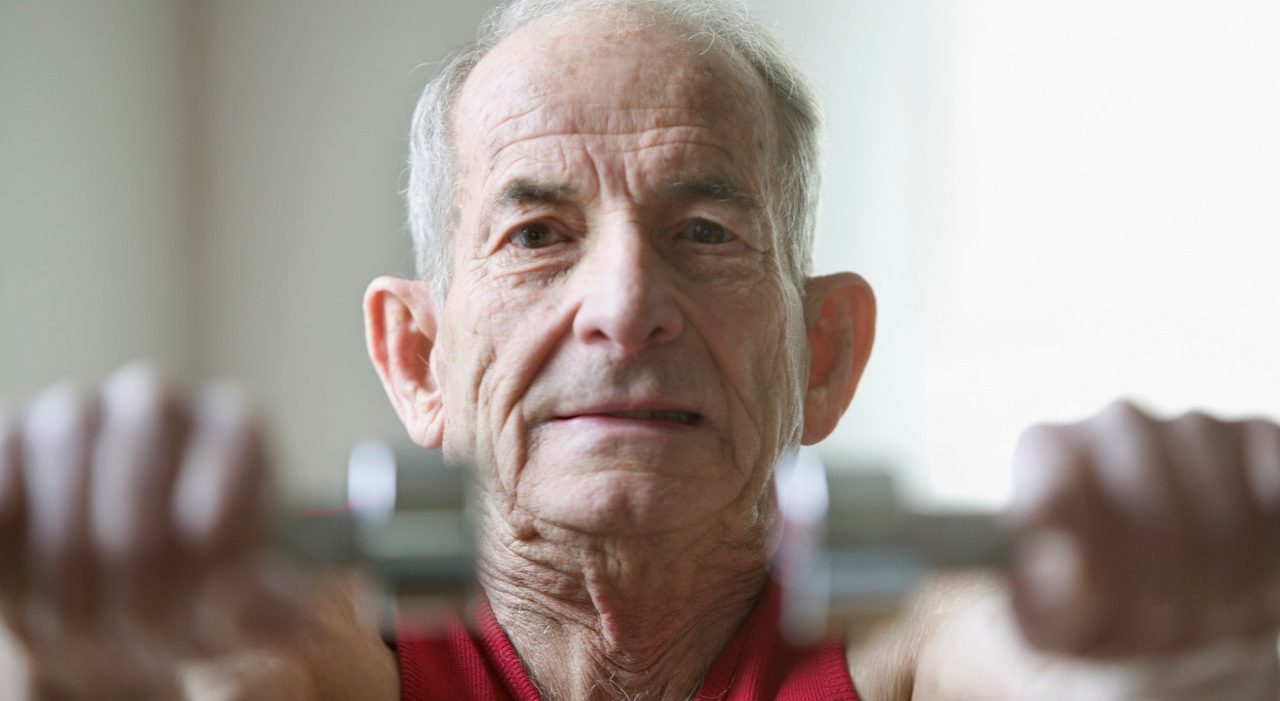How Exercise Slows Aging

Experts continue to find that small amounts of exercise have real health benefits. It may even slow down the aging process. Here's what you should know.
Exercise helps ward off life’s worst ills — heart attack, stroke, even cancer. That’s why experts urge us to get a minimum of 2.5 hours of moderate-intensity activity each week, along with two sessions of strength training.
But can exercise slow, even reverse, aging itself? That’s a question researchers are beginning to delve into — and their answers are intriguing.
YOU MIGHT ALSO LIKE: Exercise Can Reduce Falls and Fractures
High performance is possible at any age
Aging star athletes like American sprinter Irene Obera and British marathoner John Starbrook have proved that high performance is possible at any age. It’s even possible to shine if you pick up a sport later in life. One woman took up trapeze when she received a gift certificate to a class for her 78th birthday.
Such workouts may have big payoffs. There’s evidence, for example, that older men who can cycle 60 miles in under 6.5 hours had the muscle mass, strength, body fat, T-cells (a measure of immune function), cholesterol, and testosterone levels of healthy men in their 20s and early 30s.
Another study found that a group of 65- to 80-year-olds, who participated in a program of high-intensity cycling for 16 minutes three times a week, boosted their performance on a key measure of aging by almost 70 percent in 12 weeks. The researchers measured how efficiently their mitochondria, the energy centers of human cells, produced energy. When mitochondria perform poorly, you’re at more risk of aging-related diseases.
Lengthen your telomeres
Over a lifetime, as our cells divide and replicate, caps called telomeres protect the DNA on the end of each chromosome, making sure our DNA is replicated exactly. That’s important because mutations in DNA can lead to diseases like cancer. With each division, however, the telomeres shorten, until finally the cell can no longer replicate DNA safely. Then it either stops dividing or dies.
As a result, telomere length is associated with aging. In a landmark study, women living under high-stress conditions (all were caregivers for a chronically ill child) were found to have telomeres that were the equivalent of 9 to 17 years shorter than those of women who had given birth to a healthy child. In other words, at the cellular level, the caregiver women were a full decade or two older than their less-stressed peers.
Yet here’s the kicker: People who have regular intense bursts of exercise may have much longer telomeres than those who are only moderately active, or not active at all. People with longer telomeres may even look younger, according to an analysis of data on nearly 418,000 volunteers.
Although scientists can’t yet say exactly how much exercise we’d each need to slow aging (genes have a big role in healthy aging and longevity), it’s clear that a sedentary lifestyle is linked to shorter telomeres. Other research suggests that it may take only six months to increase your telomere length.
Protect your mind
Increasing evidence suggests that exercise also turns back the clock on the mind — but it doesn’t take a lot. One study showed improved memory in adults aged 57 to 75 who exercised for an hour, three times a week, for just three months.
Live longer
People who exercise live longer. A study of nearly 140,000 volunteers with an average age around 70 concluded that even people who walked fewer than two hours a week and didn’t engage in other activity were less likely to die during the 13-year study period than those who were completely inactive.
Keep up the pace
Walking may cut your risk of several serious illnesses — from heart disease to breast and colon cancer to diabetes — other research has found.
Your pace is a key indicator of your health. In fact, cardiologists ask people to walk for six minutes after a heart attack — your pace is considered a measure of your chances of survival in the next year.
If you’re less active and you’d like to start or increase your exercise, check with your doctor first. He or she can help you find specific types of activity that work for you and tell you which may not be safe based on your health conditions.
Then, take it one step at a time. Walking, swimming, or any other sport you enjoy are all a good place to start. For example, try walking for just 10 minutes a day and work up from there, adding 5 or minutes every week or two until you reach recommended guidelines (150 minutes of moderate activity, or 75 minutes of vigorous activity, each week). Soon, you’ll be feeling fitter — and you may just be growing younger, too.
Updated:
November 08, 2022
Reviewed By:
Christopher Nystuen, MD, MBA, and Janet O’Dell, RN